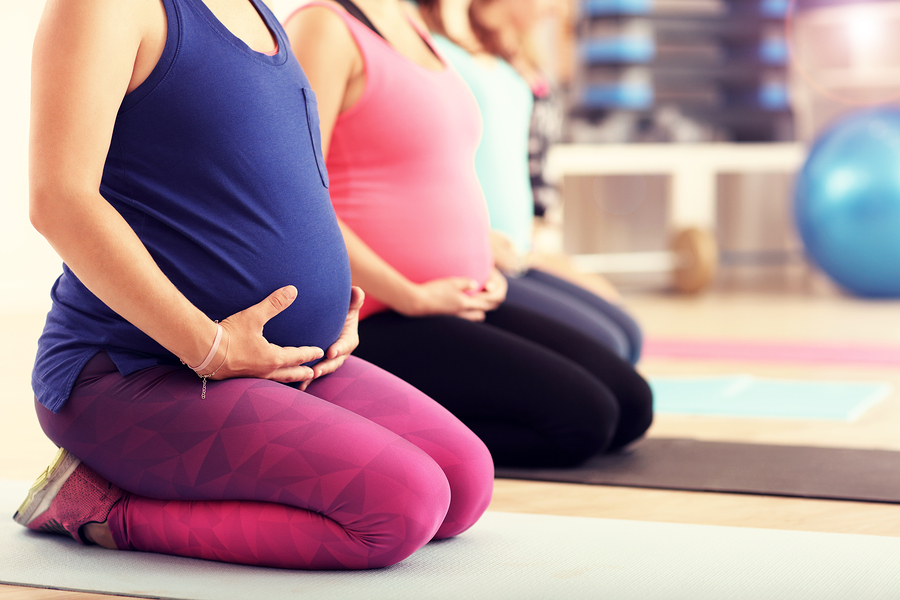FIT MAMA – NCT
We all know that keeping fit and healthy is an important part of pregnancy and post natally, but it can be tough particularly if you suffer any pelvic girdle pain or had a difficult birth. Lisa Few, a local physiotherapist who specialises in women’s health, has helped hundreds of women both ante and post natally with many issues including; pelvic girdle pain (PGP), bladder weakness, prolapse and post natal back pain. We are very fortunate to have such an experienced specialist locally so we asked Lisa for her advice for expectant and new mums.
The third trimester can be tough for a lot of women, what sort of exercise do you recommend to patients?
I would recommend Pilates during pregnancy. Pilates helps to keep your core stability strong which will help you return to exercise post natally. I would also recommend swimming, it is a safe environment where you are supported by the water. I generally advise avoiding breaststroke as it can put quite a lot of stress through the pelvis. Front crawl and backstroke work on your diagonal muscle sling patterns which help to strengthen and stabilise the pelvis.
What do you recommend for anyone suffering with pelvic girdle pain?
I would advise seeing a women’s health physiotherapist, it is important to ensure that the joint is moving correctly and if it is not, to correct this before any other treatment. Modification of everyday activities is really important as well, for example hovering, cleaning or even getting out of bed. It is very important trying to avoid taking your legs out to the side and really importantly using your pelvic floor muscle when you have to move.
Being a new mum is exhausting, but there are real benefits to getting out of the house and doing some easy exercise, when do you recommend that mums start exercising following a natural birth and following a caesarean?
Exercise post natally is really important but it is really important that you do the right type of exercise in the first few months to avoid any problems later on. I advise my patients to start with post natal Pilates, walking and swimming and then to gradually build on that. Your body is going to take some time to get back to your pre pregnancy state and we classify the post natal period as a full year. It is advised that you start gentle exercise again about 6 weeks after a vaginal delivery and about 12 weeks after a c section.
We all know pelvic floor exercises are key, how should we do them and when should we do them?
They are really important!! And an exercise that should be done everyday for the rest of our lives!! There are 2 types of pelvic floor muscle exercise; the first where you are contracting and holding the contraction whilst breathing for 10 seconds and the second, the quick exercises where you contract and let go. Ideally you want to aim for 10 of each exercises 3 times a day. I say to my patients the perfect time to do them is when you are feeding your little one.
What does a post natal check consist of and when should we be thinking about having it done post birth?
We offer a post natal check at the Physio Company, with myself a women’s health physio. We check your pelvis for good alignment, abdominal muscles as some women can experience a diastasis (gap in the stomach muscles), the pelvic floor muscle to ensure that it is activating correctly. Our pelvic floor muscle is a really important muscle ensuring that we don’t have any problems with a pelvic organ prolapse and to help with spine stability and strength. Ideally a post natal check should be done at about 6 weeks if you have had a vaginal delivery and 6-8 weeks following a c section.
What is joint laxity and how long can it last?
During pregnancy we have a hormone called relaxin that circulates our body. It causes joint laxity, primarily to allow the pelvis to move during labour and delivery. It is not isolated to the pelvis and can affect all joints from our feet to our shoulders. The joint laxity can last for approximately 3-4 months after you finish breast feeding. So for example if you decide to breast feed for 12 months you will have a degree of joint laxity up to 16 months post natally. This is really important to remember if you are keen to get back to higher impact exercise ie running.
How long do you recommend before mums start more intensive exercise like running or cycling?
I always advise my patients to work on what I call building blocks prior to getting back to running. Building blocks such as Pilates and swimming help to strengthen abdominal and core stability, both of which are really important to give you control when running. I generally advise waiting for at least 4-5 months prior to getting back to running, but everyone is different and everyone has experienced different pregnancies and deliveries. I would advise if you are in any doubt about your strength and stability don’t start running until a Physio can assess you and if necessary give you a strengthening programme before starting.
Finally, what is your top tip for any new mum?
Enjoy it, I remember the midwife saying to me when she handed me my son, it won’t be long before he starts school. I remember so vividly thinking are you crazy!!! But come September he starts school!! The first 3 months are all a bit daunting but always remember you are mum and you will know your child the best. Enjoy the adventure!!
Lisa practices at the Physio Company, Claygate where she also runs the ante and post natal Pilates classes.
-Article by Lisa Few of The Physio Company

